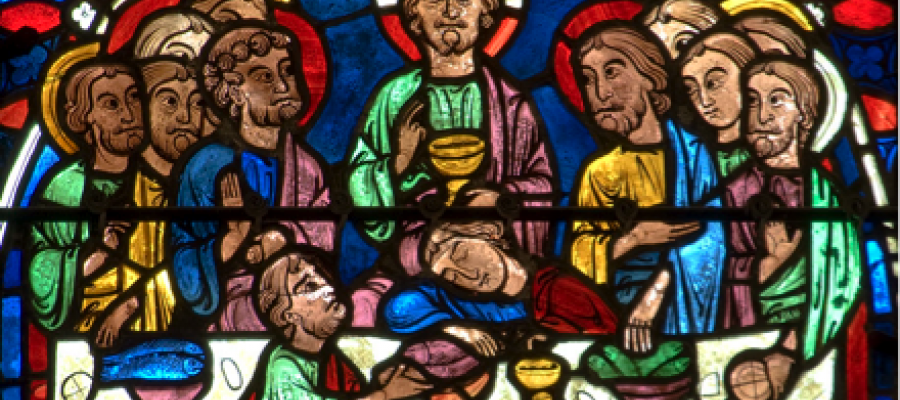
I grew up as a boy going to the Christian Reformed Church, in which every Sunday we would recite the Apostle’s creed. It starts: “I believe in God, the Father almighty, maker of Heaven and Earth.” There are two things to note here. First, the creed mentions the psychological state of “belief.” Second, the belief is supposed to be in a being that is almighty, or omnipotent.
I wrote last time on whether cognitive science of religion impacts whether one should believe in God. Today I’d like to discuss a finding that raises a different but related question.
What is the psychological nature of religious “belief”—or credence, as I call it?
In 1996, the young psychologist Justin Barrett, together with Frank Keil, published the following discovery. If you give a story about God to members of a religion that professes the “omni” properties (God is omnipotent, omniscient, and omnipresent), they do not process the story in a way that takes those properties into account. Rather, people process the story as though God has certain limitations, contrary to the “beliefs” they profess. Furthermore, their subjects included members of several religions: Buddhism, Bahaism, Protestantism, Catholicism, and Judaism.
More generally, people seem to reason about God as if God were an agent, a being that acts on the basis of beliefs, interests, and limitations, just like any other.
Let’s look at their experiment more closely. Barrett and Keil gave their subjects vignettes that describe God helping two different parties in different locations. Critically, the stories in the vignettes were neutral as to whether God helped the two parties simultaneously or sequentially (one then the other).
They later asked subjects to recall and recount the stories.
An omnipotent and omnipresent God should be able to help people in different places simultaneously. So you might think subjects recalled the story in a way that portrayed God helping the different parties in different places at the same time. Or perhaps they should simply replicate the neutrality of the original story.
But that’s not what happened.
By a very significant margin, subjects recollected the story as if God helped the parties one at a time. Their recall seemed guided by the same intuitive assumption you would make about any other agent: agents can only be in one place at a time.
Here’s the key conclusion. The way subjects implicitly reason about God is contrary to their professed “beliefs.”
So we can return to our original question, reformulated in light of this experiment. What is the nature of the “belief” that people are reporting when they say “I believe in God, the Father almighty”? You would think that if someone believed this proposition, he or she would reason and recollect in accordance with it. But this is what Barrett and Keil show religious believers do not do for many of their so-called beliefs.
A comparison immediately suggests itself. Many people have politically correct beliefs, attitudes they express publically, even though they tend to think, reason, and act otherwise. A school teacher, for example, may say she believes students from one race are no more likely to do mischief than students from another race, but as soon as something goes missing from the supply closet, she leaps to suspecting students of color much more than white students. Furthermore, these suspicions guide her actions, leading her to question students of color more aggressively and with greater suspicion.
The politically correct school teacher has two levels of representation in her mind that pertain to race and behavior. At the politically correct level, the level that controls what she says, she represents all the races as being the same with respect to their likelihood of committing mischief. But at an underlying, intuitive level she represents people of color as more prone to breaking the rules than whites. (I think the existence such discrepancies is common knowledge by now, as it yields the well-know phenomenon of implicit bias.)
The Barrett and Keil experiment shows, surprisingly, that there is a similar two-level structure in the minds of religious “believers”—at least for religions that profess the “omni” properties. At the theologically correct level, they represent God as omnipresent. At an underlying intuitive level, they represent God as limited to one place at a time, like any other agent. (For the record, I’m drawing the parallel between political correctness and theological correctness purely for the sake of illuminating the cognitive structures in question. I am not implying by this comparison that religious persons are prone to prejudice.)
It would be tempting to conclude that the level of theologically correct credence is mere pretense. The “believers” in God’s omnipresence are merely pretending to believe. On this cynical model, the theologically correct “belief” is a mere fictional imagining, expressed as part of a pretense.
But I think that the cynical model goes too far. There was a sincerity that accompanied the profession of the Apostle’s Creed, as far as I could tell. People were not willfully being dishonest about what they believed. And the cynical model is wrong insofar as it predicts this sincerity should not exist. (We can say something similar about our school teacher. She may be quite in earnest when she professes her egalitarian “beliefs.”)
On the other hand, the usual simple model of religious belief, which holds that religious believers straightforwardly believe what they profess like you or I believe grass is green, can’t be right either. That’s what Barrett and Keil show.
Thus, neither the cynical model nor the simple model correctly describes the psychology of theological correctness. But if both of the obvious-seeming models are wrong, that just leaves us with a compelling question, which is a special case of our broader psychological question.
What, precisely, is the nature of theologically correct credence?
I’ll attempt an answer in my next piece.